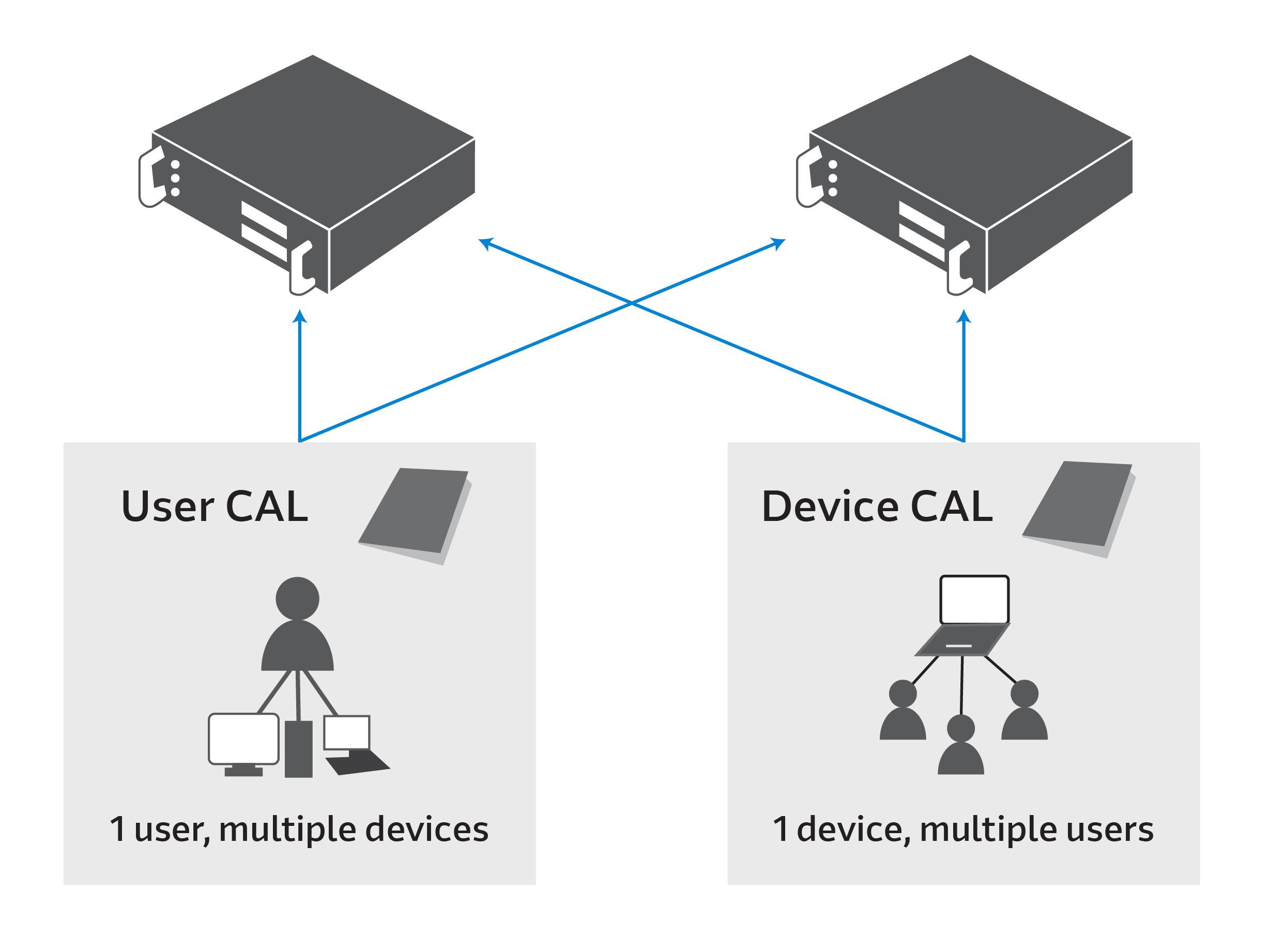Microsoft Client Access Licenses (CALs) provide users or devices the authorization to access Microsoft server software. They function as permits granting access to certain services on a Windows Server. There are two types of CALs: User CALs for individual users and Device CALs for specific devices like computers and smartphones.
Determining the number of CALs may seem simple: acquire one CAL for every user or device needing access to your server. However, a significant challenge arises for many OEMs as they often need more clarity on the number of users or devices necessitating access to their Windows Server solution. In addition, OEM customers usually possess pre-existing Windows CALs and may resist purchasing additional licenses. In today’s IoT landscape, defining a user or device is more complex compared to the simplicity of terms established by Microsoft over 25 years ago when CAL licensing originated with Windows NT.
Today, when you visit the Microsoft website that discusses licensing, the following image is displayed:

The image above is useful if your situation involves users and computing devices. However, in IoT, a device doesn’t exclusively mean a computer; a user might not always refer to a person or an employee. This complexity often causes many extra calls and meetings to determine how many CALs are needed.
The most popular questions I get are, “Do I need a CAL?” and “How many CALs do I really need?”
Microsoft has now introduced the CAL-less Server option, making things simpler. There’s no need for CAL-related questions anymore, and your OEM IoT Server solution guarantees end-user compliance and legal coverage concerning CALs. This new CAL-less Server option is strictly available via the OEM IoT Channel and not through any other Microsoft channels.
The fresh CAL-less Server license option eliminates the licensing terms mandating Client Access Licenses for a Windows Server. The product remains unchanged, utilizing the same installation media. The only difference with this new license is that servers no longer need CALs once they’re licensed under this CAL-less server option. You purchase a CAL-Less Server license option for each server you want to remove the CAL requirements. Here are the part numbers for the CAL-less Windows Server IoT 2022 and 2019 options, respectively.
|
EOL |
EOS |
PART# |
WINDOWS SERVER IoT STANDARD 2022 CAL-LESS OPTION |
|
12/31/31 |
10/14/31 |
6FA-00649-1P |
Win Svr IoT STD 2022 ESD OEI 16 Core CAL-Less Std |
|
12/31/31 |
10/14/31 |
6FA-00650-1P |
Win Svr IoT STD 2022 ESD OEI 20 Core CAL-Less Std |
|
12/31/31 |
10/14/31 |
6FA-00651-1P |
Win Svr IoT STD 2022 ESD OEI 24 Core CAL-Less Std |
|
12/31/31 |
10/14/31 |
6FA-00553-1P |
Win Svr IoT STD 2022 ESD OLC 4 Core Add-on Lic |
|
EOL |
EOS |
PART # |
WINDOWS SERVER IoT STANDARD 2019 CAL-LESS OPTION |
|
12/31/29 |
01/09/29 |
6FA-00493-1P |
Win Svr Emb Std 2019 ESD OLC 16 Core CAL-Less Std |
|
12/31/29 |
01/09/29 |
6FA-00494-1P |
Win Svr Emb Std 2019 ESD OLC 20 Core CAL-Less Std |
|
12/31/29 |
01/09/29 |
6FA-00495-1P |
Win Svr Emb Std 2019 ESD OLC 24 Core CAL-Less Std |
|
12/31/29 |
01/09/29 |
6FA-00431-1P |
Win Svr Emb Std 2019 ESD OLC 4 Core Add-on Lic |
This new CAL-less license option also reduces the number of Microsoft part numbers your procurement team must handle, streamlining the process and inventory management. With fewer licenses to take and sell, it saves time across the board—from your customers to your sales and purchasing teams. After all, “Who has Time for Microsoft CALs?”
By transitioning to these new CAL-less Server license options, there’s no need to buy Windows Server CALs anymore. However, it’s important to note that it doesn’t cover Remote Desktop Service (RDS) CALs, as these are still necessary if your solution utilizes remote desktop services. Nonetheless, it eliminates the need for standard Windows Server CALs.
You no longer need to purchase these parts shown below:
WINDOWS SERVER 2022 & 2019 CLIENT ACCESS LICENSES
|
|
|
|
|
|
|
|
|
|
|
|
|
|
|
|
|
|
|
|
|
|
|
|
|
|
|
If you have any questions on CALs or Microsoft licensing, please reach out to our team of experts at windowsiot@arrow.com.


